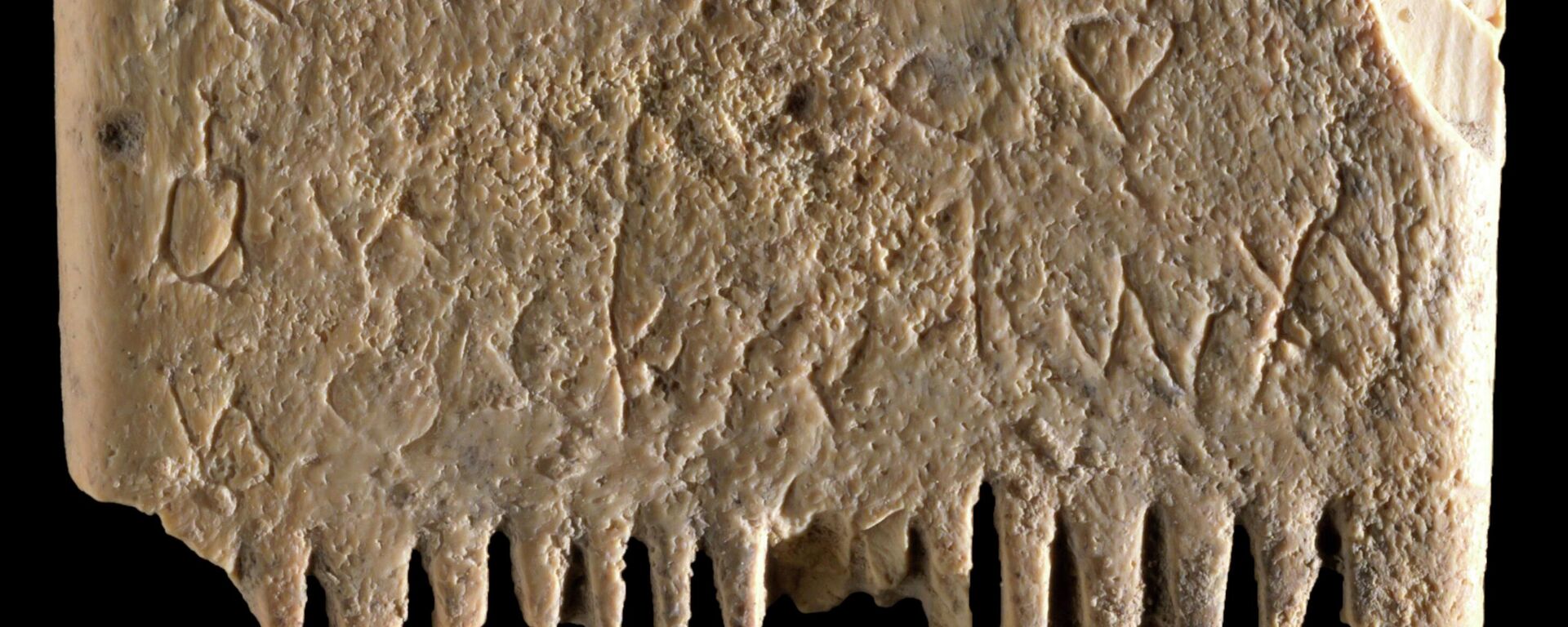https://sputnikglobe.com/20230609/listen-archeologists-recreate-12000-year-old-bird-bone-flute-found-in-israel-1111036428.html
Listen: Archeologists Recreate 12,000-Year-Old Bird-Bone Flute Found in Israel
Listen: Archeologists Recreate 12,000-Year-Old Bird-Bone Flute Found in Israel
Sputnik International
Archeologists have unearthed what they believe to be the oldest wind instruments ever found in the Middle East: a collection of tiny flutes made from the bones of birds.
2023-06-09T21:05+0000
2023-06-09T21:05+0000
2023-06-09T21:05+0000
beyond politics
israel
hebrew university
israel antiquities authority
music
archeology
https://cdn1.img.sputnikglobe.com/img/07e7/06/09/1111036595_0:155:1228:846_1920x0_80_0_0_8b3d1aff58a78dcc122e4ebfbaca339b.png
The find was made in northern Israel by a joint French-Israeli team of archaeologists, who summarized their work in an article published on Friday in the peer-reviewed Nature Scientific Report.The flutes date to around 10,000 BCE, a time when humans were beginning to make the transition from roaming to a sedentary lifestyle based on agriculture as the Ice Age drew to a close and the global climate warmed.The settlement was in an ideal location near Lake Hula, a marshy body of water that the Israelis drained in the 1950s to combat mosquitoes and create more farmland. Before it was drained, Lake Hula attracted huge quantities of birds, including waterfowl and migratory birds, which continue to frequent the area’s nature reserve.The humans who settled in Eynan consumed the birds in large quantities, and piles of bird bones have been found across the area. Some of the bird bones, which are naturally hollow, were found to have holes carved in them, turning them into tiny flutes.Dr. Laurent Davin, a post-doctoral fellow at Hebrew University, was examining some of the bones recovered from the site when he noticed tiny holes drilled at regular intervals along a few of the bones. At first, experts had dismissed the holes as regular wear and tear on the delicate bird bones. But Davin examined the bones more closely and noticed that the holes were at very even intervals, and clearly created by humans.Dr. Hamoudi Khalaily, a senior researcher with the Israel Antiquities Authority (IAA) who has spent 10 years excavating at the Eynan site, told Israeli media he had helped create a replica of the flute, allowing them to play it and hear the sounds produced by those humans 12,000 years ago.“There were a lot of doubts that this was even possible [to recreate], but the replica was created exactly [in the same way] as the original and it allowed us to hear what people would have heard 12,000 years ago,” Khalaily said.Professor Rivka Rabinovich, the scientific director of archeozoological collections at the National Natural History Collections at Hebrew University, said it could have been used for communication, hunting, or music, but there was no way to be sure. Still, the discovery opens up new questions about the lives of humans during the transition from hunter-gatherers to settled farmers.The flutes are believed to be the oldest instruments found in the Middle East, but they’re not the oldest ever found on Earth. In 2008, archeologists in southern Germany found flutes made from vulture bones and mammoth ivory that were roughly 40,000 years old. The flutes are so old they might have been made by Neanderthals, an extinct subspecies of mankind that lived alongside humans at the time.
https://sputnikglobe.com/20221109/it-is-a-very-human-text-archeologist-discover-oldest-sentence-written-in-ancient-alphabet-1103955335.html
israel
Sputnik International
feedback@sputniknews.com
+74956456601
MIA „Rossiya Segodnya“
2023
News
en_EN
Sputnik International
feedback@sputniknews.com
+74956456601
MIA „Rossiya Segodnya“
Sputnik International
feedback@sputniknews.com
+74956456601
MIA „Rossiya Segodnya“
archeology; israel; eynan; bones; flute
archeology; israel; eynan; bones; flute
Listen: Archeologists Recreate 12,000-Year-Old Bird-Bone Flute Found in Israel
Archeologists have unearthed what they believe to be the oldest wind instruments ever found in the Middle East: a collection of tiny flutes made from the bones of birds.
The find was made in northern Israel by a joint French-Israeli team of archaeologists, who summarized their work in an article
published on Friday in the peer-reviewed Nature Scientific Report.
The flutes date to around 10,000 BCE, a time when humans were beginning to make the transition from roaming to a sedentary lifestyle based on agriculture as the Ice Age drew to a close and the global climate warmed.
The site, about 16 miles north of the Sea of Galilee, is called Eynan, and represents a window into the Natufian culture of this transitional time, when the first cities were being founded. It was first excavated in 1955.
The settlement was in an ideal location near Lake Hula, a marshy body of water that the Israelis drained in the 1950s to combat mosquitoes and create more farmland. Before it was drained, Lake Hula attracted huge quantities of birds, including waterfowl and migratory birds, which continue to frequent the area’s nature reserve.
The humans who settled in Eynan consumed the birds in large quantities, and piles of bird bones have been found across the area. Some of the bird bones, which are naturally hollow, were found to have holes carved in them, turning them into tiny flutes.
Dr. Laurent Davin, a post-doctoral fellow at Hebrew University, was examining some of the bones recovered from the site when he noticed tiny holes drilled at regular intervals along a few of the bones. At first, experts had dismissed the holes as regular wear and tear on the delicate bird bones. But Davin examined the bones more closely and noticed that the holes were at very even intervals, and clearly created by humans.
“One of the flutes was discovered complete, and so far as is known it is the only one in the world in this state of preservation,” Davin said in a release that accompanied the article’s publication.
Dr. Hamoudi Khalaily, a senior researcher with the Israel Antiquities Authority (IAA) who has spent 10 years excavating at the Eynan site, told Israeli media he had helped create a replica of the flute, allowing them to play it and hear the sounds produced by those humans 12,000 years ago.
“There were a lot of doubts that this was even possible [to recreate], but the replica was created exactly [in the same way] as the original and it allowed us to hear what people would have heard 12,000 years ago,” Khalaily said.

9 November 2022, 23:05 GMT
“When we first heard it, it gave us this feeling like, we are really doing something for history,” Khalaily said.
Professor Rivka Rabinovich, the scientific director of archeozoological collections at the National Natural History Collections at Hebrew University, said it could have been used for communication, hunting, or music, but there was no way to be sure. Still, the discovery opens up new questions about the lives of humans during the transition from hunter-gatherers to settled farmers.
“It’s very interesting because this is just at the starting point of people becoming more sedentary,” Rabinovich explained. “It’s a very exciting period at which to understand the day-to-day life and also larger questions beyond day-to-day life, and why they did certain things.”
The flutes are believed to be the oldest instruments found in the Middle East, but they’re not the oldest ever found on Earth. In 2008, archeologists in southern Germany found flutes made from vulture bones and mammoth ivory that were roughly 40,000 years old. The flutes are so old they might have been made by Neanderthals, an extinct subspecies of mankind that lived alongside humans at the time.



